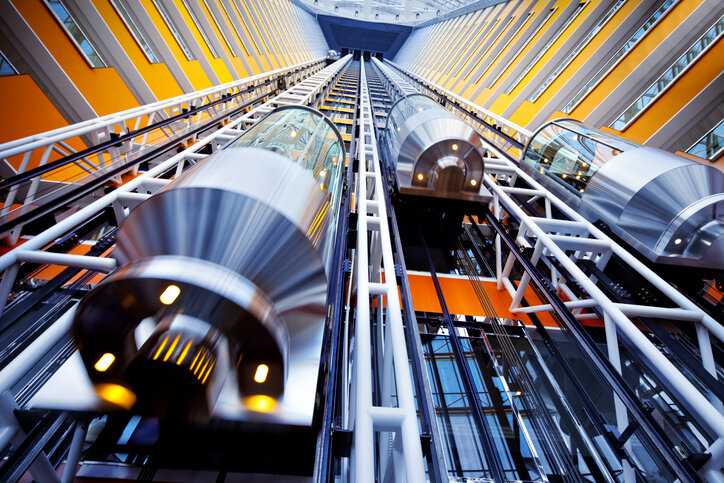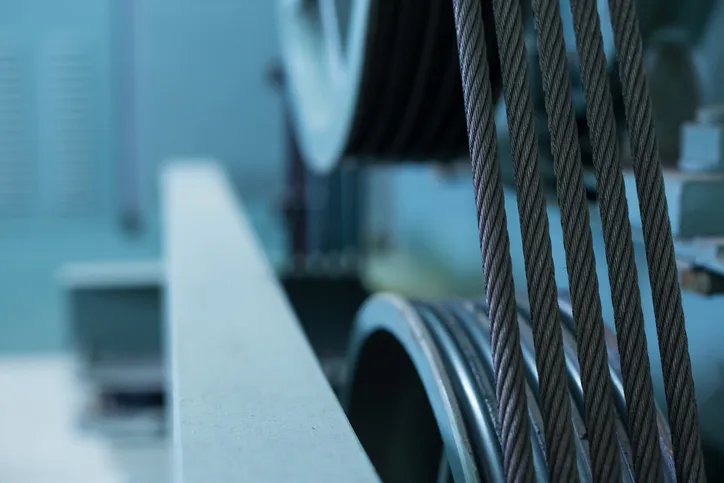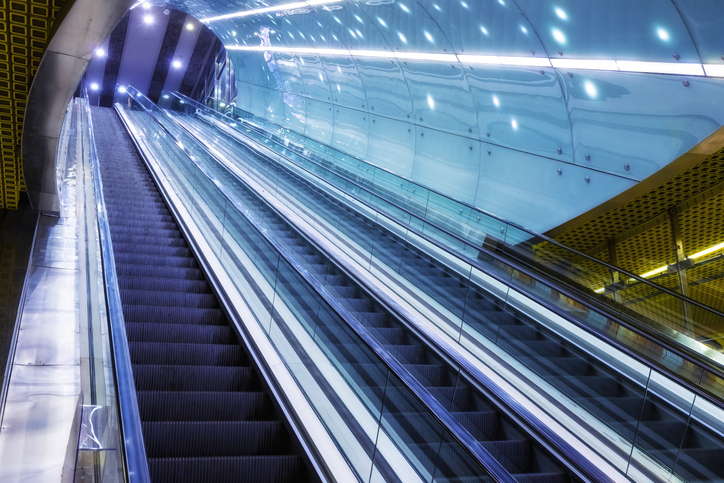ASME A17.1-2022: Safety Code for Elevators and Escalators

The safety code for elevators and escalators, ASME A17.1-2022, or, if you’re in Canada, CSA B44-2022, has been revised. ASME A17.1/CSA B44-2022: Safety Code For Elevators And Escalators serves as a basis for the design, construction, installation, operation, testing, inspection, maintenance, alteration, and repair of elevators, dumbwaiters, escalators, moving walks, and material lifts.
The Safety Code for Elevators
What goes up must come down, or, in the case of elevators (lifts), must descend basically the same way it rises. Enhancing skyward construction by permitting taller buildings, or just allowing an easier upwards route for those of us who just don’t feel like taking the stairs, elevators fortify the modern life in which we thrive. In all, U.S. elevators make 18 billion passenger trips each year.
ASME A17.1-2022, as a code, is intended to provide safety of life and limb and promote public welfare. It covers not only elevators, escalators, moving walks, dumbwaiters, material lifts, and related equipment, but also their associated parts, rooms, spaces, and hoistways.
In ASME A17.1, the key concern is safety, and by working to assure the efficient use of elevators (or lifts) and rooting them with rigid recommendations, the daily passengers of the elevator cars remain safe. The majority of these efforts are present in the elevators’ construction. This includes design considerations such as using the correct materials, allocating for allowable stresses, a means of suspension for cars and counterweights, and braking mechanisms, just to name a few.
As for escalators and moving walks, the design specifications are written with the same safety interests, but they, of course, are catered to the relevant equipment. For example, the guidelines for escalators call for many important design characteristics in the balustrades, such as their materials (glass or plastic), strength, and geometry.
The ASME A17.1-2022 document is broken up into specific parts to ease compliance. Each part, other than those detailing general requirements, cover a specific equipment—electric elevators, hydraulic elevators, elevators with other types of driving machines, special application elevators, escalators and moving walks, and dumbwaiters and material lifts. In all, this document details a range of interests, but is succinct enough to be adopted by regulatory bodies.

Please note that ASME A17.1-2022 excludes specific equipment covered by other standards and codes, including those specified in other ASME A17 standards. Furthermore, the code applies to new installations only, except for specific sections outlined in the document. If you’d like to learn about the various other standards in this series (including the safety code for existing elevators and escalators, ASME A17.3), please refer to our post ASME A17 Elevator Safety Standards.
If you need to acquire numerous standards in this series, you can get them bundled together at a discount as the ASME A17. Elevator and Escalator Safety Package.
Changes to ASME A17.1-2022/CSA B44-2022
The safety code for elevators dates back one century, so, over the years, numerous revisions have kept it current. With these changes, the scope of the document has expanded, accommodating not just elevators but also escalators, dumbwaiters, and other equipment types. Decades of changes have developed ASME A17.1-2022 into an expansive and hefty document, comprehensively approaching various topics pertinent to elevators and other machinery in its over 500 pages of content.
Continuing this tradition, ASME A17.1-2022, as the twenty-third edition of the code, features an abundance of revisions. Important changes to this standard include:
- Cybersecurity requirements were added.
- Remote interaction operation requirements were added.
- Test enable operation requirements were added.
- Updates were made to flood protection of elevators, alternate testing of emergency braking, and door position monitoring on Phase II.

For a more comprehensive outlook of all editions and supplements of ASME A17.1, as well as when they were approved, issued, and effective, you can refer to the foreword of the standard document.
CSA B44-2022: Safety Code for Elevators and Escalators
In Canada, the safety code for elevators and escalators is CSA B44. This standard, persisting nearly as long as ASME A17.1, helps facilitate the implementation of uniform legislation across Canada. Today, much like ASME A17.1, CSA B44 covers the design, installation, and maintenance of elevators, escalators, dumbwaiters, moving walks, and material lifts, and its minimum requirements are suitable for adoption by regulatory authorities throughout Canada.
For over ten years, now, the CSA B44 Technical Committee on the Elevator Safety Code and the ASME A17 Committee on Elevators and Escalators jointly develop ASME A17.1 and CSA B44 to harmonize provisions. Therefore, these standards are published as the same document.
For those seeking to use the document in Canada, ASME A17.1/CSA B44-2022 consists of the complete ASME A17.1 code, with additional requirements applicable only in Canadian jurisdictions. To find these Canadian requirements, they are prefaced in the body of the code with:
“In jurisdictions enforcing the NBCC …”
ASME A17.1/CSA B44-2022: Safety Code For Elevators And Escalators is available on the ANSI Webstore.
Changes to ASME A17.1-2019
For those who need to know some of the important changes made to the previous edition of this standard revised in 2019, we’ve listed them below:
- Updates to door requirements in private residence elevators and occupant evacuation elevators.
- Seismic requirements for elevators and escalators were clarified.
- Updates were made to emergency communication requirements for an elevator to ensure communication with any trapped passengers, including those who are hearing impaired.
- Requirements were modified for increased door protection on passenger elevators.
Changes to ASME A17.1-2016
As for the twenty-first edition of the code, some major changes to the 2016 revision were made to the following areas:
- seismic requirements for escalators
- requirements for special purpose personnel elevators
- rack-and-pinion elevators
- private residence elevators
- and material lifts with obscured transfer devices
Furthermore, this revision saw the addition of elastomeric buffer requirements and the removal of Section 7.11 on material lifts with obscured transfer devices, Nonmandatory Appendix T on inspection and replacement of steel wire ropes, and Nonmandatory Appendix W on wind turbine tower elevator clearances. After this revision, Wind Turbine Tower Elevators, are now addressed within ASME A17.8/CSA B44.8.







I would like to order the A17.1, 2019 code book
You can buy a PDF of ASME A17.1/CSA B44-2019 from ANSI here: https://webstore.ansi.org/Standards/ASME/ASMEA17CSAB442019-2400977?source=blog
Is a land phone required in the elevator cab for a 5 storied building in Toronto Canada?
Thanks,
on a mezzanine ..how do i know if an elevator is needed.
Does the code require video cameras with text capability in existing elevators
When are elevator doors required to open or close ie: When power is manually shut off or when there is a power outage.
In Machine Room Less Hydraulic Elevators, the hydraulic oil tanks and pump units are located in the shallow pit at the bottom of the shaft. The International Building Code says you are not supposed to put any mechanical equipment in the shaft. The movements of the elevator cabs assist in moving air to indirectly ventilate the shaft, but the shaft temperatures rise to as high as 95 degrees F. or higher at the bottom of the shaft (drops in temperature as you go up in the shaft). These temperatures are within the range of temperatures allowed by Code and the hydraulic elevator manufacturers.
Should these shafts be conditioned or ventilated, and if so, how can you meet code and get conditioned air to the hot spots?
I am inquiring if a worker needs to be certified to perform any work on an elevator in the state of South Carolina. Any feedback would be appreciated.
Very high quality
The elevator are perfect as they are